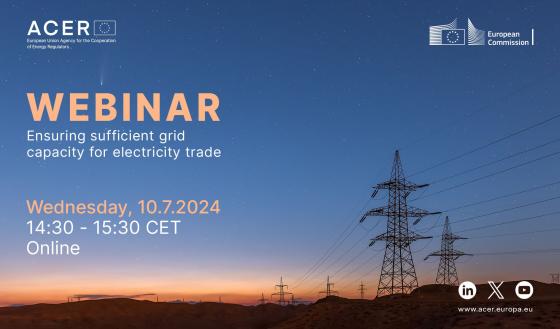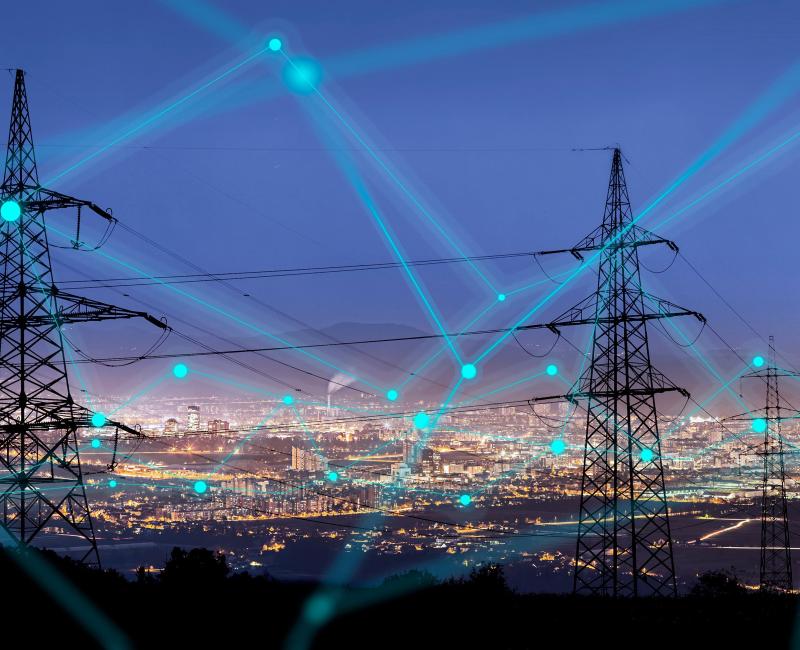Capacities for cross-zonal electricity trade and congestion management
-
Electricity

2024 Market Monitoring Report
ACER 2024 report finds that:
- The EU power grid is increasingly congested. The cost of managing this congestion in 2023 was EUR 4 billion.
- Grid congestion limits Member States’ progress in maximising capacities for cross-border trade, thus impeding further market integration.
ACER highlights the urgency for Transmission System Operators (TSOs) to meet their obligation of making 70% of transmission capacity available for cross-border electricity trading by the end of 2025. Furthermore, the recent report by the European Commission’s Joint Research Centre forecasts that power grid congestion will significantly worsen in the coming years, even in an optimistic grid development scenario.
Electricity transmission capacity connects Europe’s markets and benefits consumers
EU electricity market integration is about trading electricity with neighbouring countries. Maximising transmission capacity is essential for cross-border trade of electricity, as it enables supply and demand to match across the EU. Maximising grid capacity refers not just to the ‘physical’ grid (high voltage lines) but also to the transmission capacity that TSOs make available on those lines for trading (‘commercial capacity’) with neighbours. It is essential for TSOs to deliver maximal transmission capacity for electricity trade to achieve the ambitious political objectives set for renewable generation and ensuring that their benefits reach the end consumer.
Why is maximising current and future transmission capacity so important?
TSOs are required under EU law to make 70% of transmission capacity available for electricity trading with neighbours by the end of 2025. Maximising interconnection capacity and meeting the minimum 70% requirement:
- is a pre-requisite for the energy transition;
- enhances security of electricity supply by optimising the use of the existing grid;
- mitigates prices and price volatility;
- provides the market with much-needed flexibility; and
- ensures a level playing field between domestic and cross-border trades.
What are the key findings of the ACER report?
Already in April 2024, ACER alerted the European Parliament and Commission that there is much at stake in not meeting the minimum 70% requirement by the end of 2025 and that there are still significant challenges ahead to do so. ACER pointed to the delays in implementing coordinated TSO processes (such as those to efficiently address grid congestion), delays in reinforcing the grid itself, and delays in the bidding zone review.
This report by ACER finds that:
- The EU power grid is increasingly congested (remedial actions like redispatching rose by 14.5% in 2023). The cost of managing this congestion in 2023 was EUR 4 billion.
- Some TSOs in highly meshed areas of the EU power grid made available, on average, between 30% and 50% of the physical capacity of certain network elements in 2023, thus far from reaching 70%.
- There are still significant benefits from improving how cross-zonal capacity is calculated in the EU, as demonstrated by the introduction of flow-based market coupling in the Core region.
How to meet the 70% minimum requirement by the end of 2025?
Meeting the 70% requirement needs a unified approach – each Member State’s actions (or inactions) impact others and ultimately EU consumers. Delays in doing so move the EU away from the electricity market integration goal. The path ahead remains clear: implement coordinated congestion management processes, invest in the grid and improve the bidding zone configurations.
ACER calls for the swift implementation by Member States and TSOs of the 3 tools foreseen by EU rules to meet the 70% minimum requirement:
- TSOs to swiftly implement coordinated processes to first calculate capacity and then manage congestion. Currently, grid congestion is assessed mostly at the national level. TSOs should optimise and coordinate grid congestion management. Moving toward a more regional approach will ensure that the Member States causing loop flows will bear their cost, allowing for more capacity to be made available.
- TSOs to undertake targeted grid developments, focusing on the most congested areas of the grid.
- Improve the bidding zones configuration: if consistently unable to meet the 70% requirement, better align the bidding zone borders with where structural grid congestion occurs.
Highlights
Report
This annual ACER monitoring report on transmission capacities for cross-zonal trade of electricity and congestion management in the EU:
- assesses the availability of cross-zonal transmission capacities per region across different market time frames;
- tracks progress and bottlenecks in Member States meeting the minimum 70% requirement by end of 2025;
- finds that the cost of managing power grid congestion is significant in recent years; and
- outlines the necessary steps for Member States and TSOs to maximise the availability of cross-border capacities and efficiently address grid congestion.
Infographic
Interested in report's key findings?
Webinar
On 10 July 2024, ACER and the European Commission’s Joint Research Centre (JRC) will hold a webinar to present the key findings of:
- ACER report on transmission capacities for cross-zonal trade of electricity and congestion management in the EU.
- JRC’s assessment on the evolution of congestion management in the current EU electricity market design.
Additional information
- Access the underlying datasets






